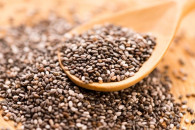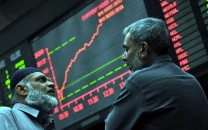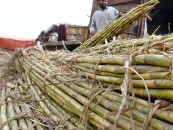Gold prices drop for second day in a row
Fall by an additional Rs4,100/tola; rupee steady despite minor losses in interbank, open markets

Gold prices in Pakistan fell for the second consecutive day on Tuesday, mirroring a global decrease in rates. In the local market, the price of gold per tola dropped by Rs4,100, settling at Rs274,300, while 10 grams decreased by Rs3,515 to Rs235,168, according to the All-Pakistan Gems and Jewellers Sarafa Association (APGJSA).
This followed Monday's Rs4,300 decline per tola. Internationally, gold rates dropped significantly, with prices standing at $2,631 per ounce, including a $20 premium, after losing $41 in a single day. Abdullah Abdul Razzaq, a member of APGJSA, attributed the international decline to Middle East peace talks, specifically discussions around a US-backed ceasefire plan between Israel and Lebanon. This marked the steepest one-day decline in over five months, with global gold prices plunging over 3% on Monday.
Further pressure on gold rates came from the announcement of US President-elect Donald Trump's nomination of Scott Bessent as Treasury Secretary. Meanwhile, Razzaq also noted that large-scale gold selling by India also influenced prices in the Pakistani market.
Adnan Agar, Director of Interactive Commodities, cautioned against market speculation, explaining that it is difficult to confirm whether central banks have made significant purchases or sales. "Central banks are regulators, not customers. Typically, they disclose transactions in end-of-month or quarterly reports to avoid market volatility," Agar explained. India's growing role in global gold trade, particularly among BRICS nations supporting de-dollarisation efforts, also played a role.
Rupee weakens marginally
The Pakistani rupee saw a slight dip against the US dollar on Tuesday, depreciating by 0.03% in the interbank market. By the close of trading, the rupee stood at 277.84, down by Re0.09 from Monday's 277.75, according to the State Bank of Pakistan (SBP).
"By the end of the trading session, the rupee depreciated by 0.03% day-on-day (DoD) to close at 277.84 but has appreciated by 1.45% calendar year-to-date (CYTD) and 0.18% fiscal year-to-date (FYTD)," reported Ismail Iqbal Securities.
Zafar Paracha of the Exchange Companies Association of Pakistan (ECAP) noted that while the rupee remains largely stable due to steady financial indicators, gradual depreciation persists due to systemic leakages, corruption, and political instability. However, he stated that the situation has improved compared to previous years. The US dollar gained globally after President-elect Donald Trump announced a 25% tariff on imports from Mexico and Canada, strengthening over 2% against the peso and 1% against the Canadian dollar. The dollar index rose to 107.37, with Trump also criticising China over drug-related exports.
Oil prices, which have a huge impact on the rupee, rebounded as Brent crude rose 1% to $73.74 per barrel, and WTI climbed 1% to $69.62 per barrel, following reports of an Israel-Lebanon ceasefire. The rupee also weakened slightly in the open market, closing at 277.09 and 278.90 for buying and selling, respectively.



















COMMENTS
Comments are moderated and generally will be posted if they are on-topic and not abusive.
For more information, please see our Comments FAQ